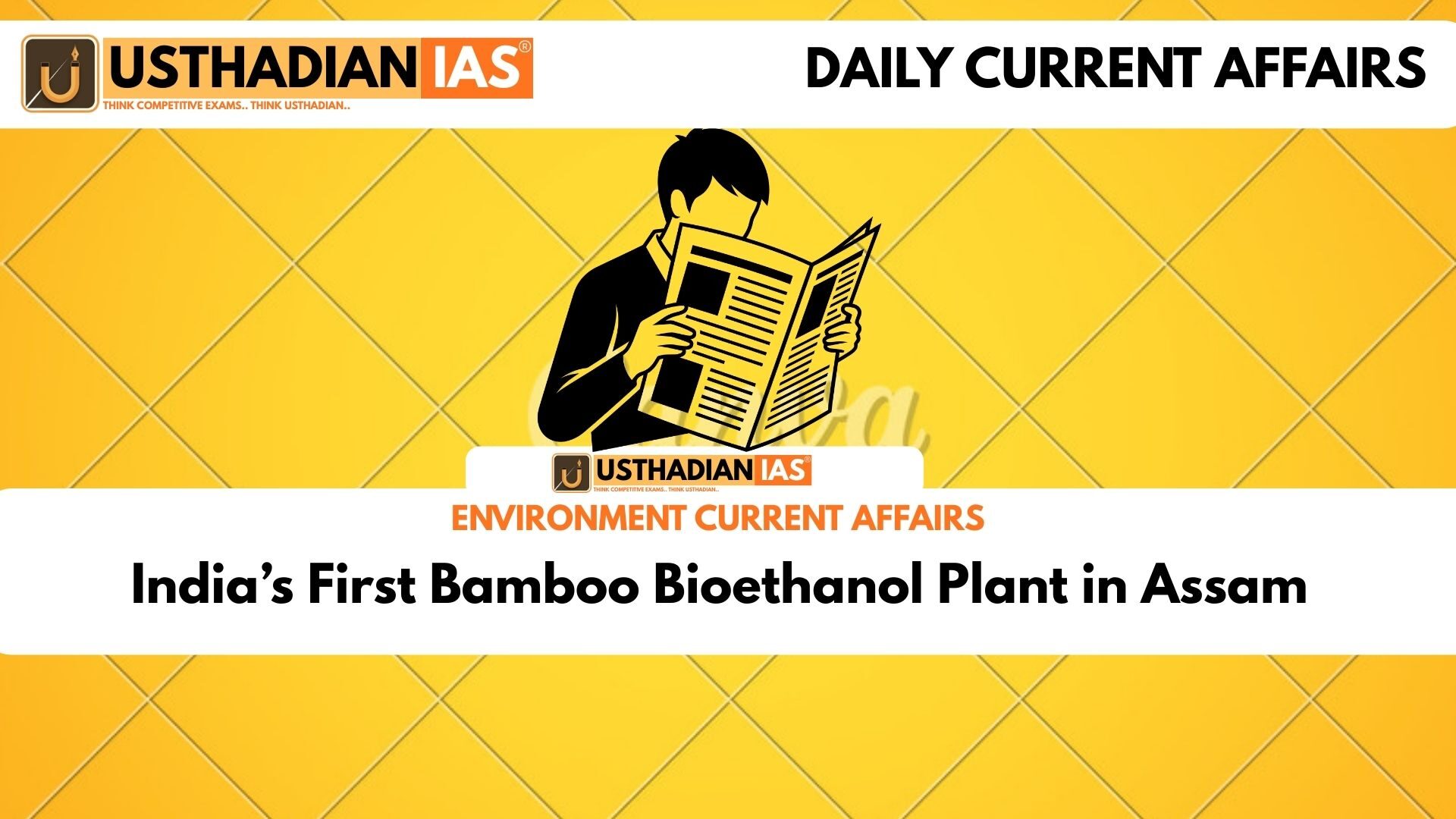First bamboo-based bioethanol initiative
India’s First Bamboo Bioethanol Plant in Assam: The Prime Minister inaugurated India’s first Bamboo-based Bioethanol Plant in Golaghat, Assam. This project is a joint venture of Numaligarh Refinery Limited (NRL) with Finland’s Fortum and Chempolis OY. The plant aims to produce ethanol from bamboo, a non-food crop, with high lignocellulose content suitable for second-generation fuels.
Static GK fact: Assam is India’s largest bamboo-producing state, contributing nearly 25% of the total bamboo resources of the country.
Importance of bioethanol
Bioethanol is ethanol derived from renewable biological sources like crops and agricultural waste. It is a clear, biodegradable liquid that burns into carbon dioxide and water. Its main applications are fuel blending, chemical production, and bio-based material manufacturing such as bioplastics.
Static GK Tip: The calorific value of ethanol is around 30 MJ/kg, lower than petrol but more eco-friendly.
Sources of bioethanol
The National Policy on Biofuels 2018 lists major sources of bioethanol. These include sugar-based crops like sugarcane and sorghum, starch-based crops like corn and cassava, and cellulosic sources such as bagasse, wood waste, and agro-residues. Bamboo’s cellulose-rich structure makes it an excellent raw material for biofuel production.
Static GK fact: India is the second-largest producer of sugarcane in the world after Brazil.
Applications and blends
Bioethanol is widely used in blended fuels. Common blends are E10 (10% ethanol + 90% petrol) and E20 (20% ethanol + 80% petrol). It is also used in pharmaceuticals, personal care products, and bio-based industrial materials.
Static GK Tip: Brazil and the USA are global leaders in bioethanol production and usage in transportation fuels.
Environmental and economic benefits
Bioethanol reduces greenhouse gas emissions, air pollution, and dependence on fossil fuels. It supports rural economies by providing farmers with additional markets for agricultural waste. Bamboo-based bioethanol especially strengthens Assam’s economy and contributes to India’s clean energy goals.
Static GK fact: The Government of India has set a target of achieving 20% ethanol blending (E20) by 2025-26 under the Ethanol Blended Petrol (EBP) programme.
Static Usthadian Current Affairs Table
India’s First Bamboo Bioethanol Plant in Assam:
| Topic | Detail |
| Location | Golaghat, Assam |
| Inaugurated by | Prime Minister of India |
| Project partners | Numaligarh Refinery Limited, Fortum, Chempolis OY |
| Raw material | Bamboo (lignocellulose rich) |
| Policy reference | National Policy on Biofuels 2018 |
| Common blends | E10 and E20 |
| Global leaders in bioethanol | Brazil and USA |
| Target in India | 20% ethanol blending by 2025-26 |
| Additional use | Pharmaceuticals, personal care, bioplastics |
| Environmental benefit | Reduces greenhouse gas emissions and pollution |








